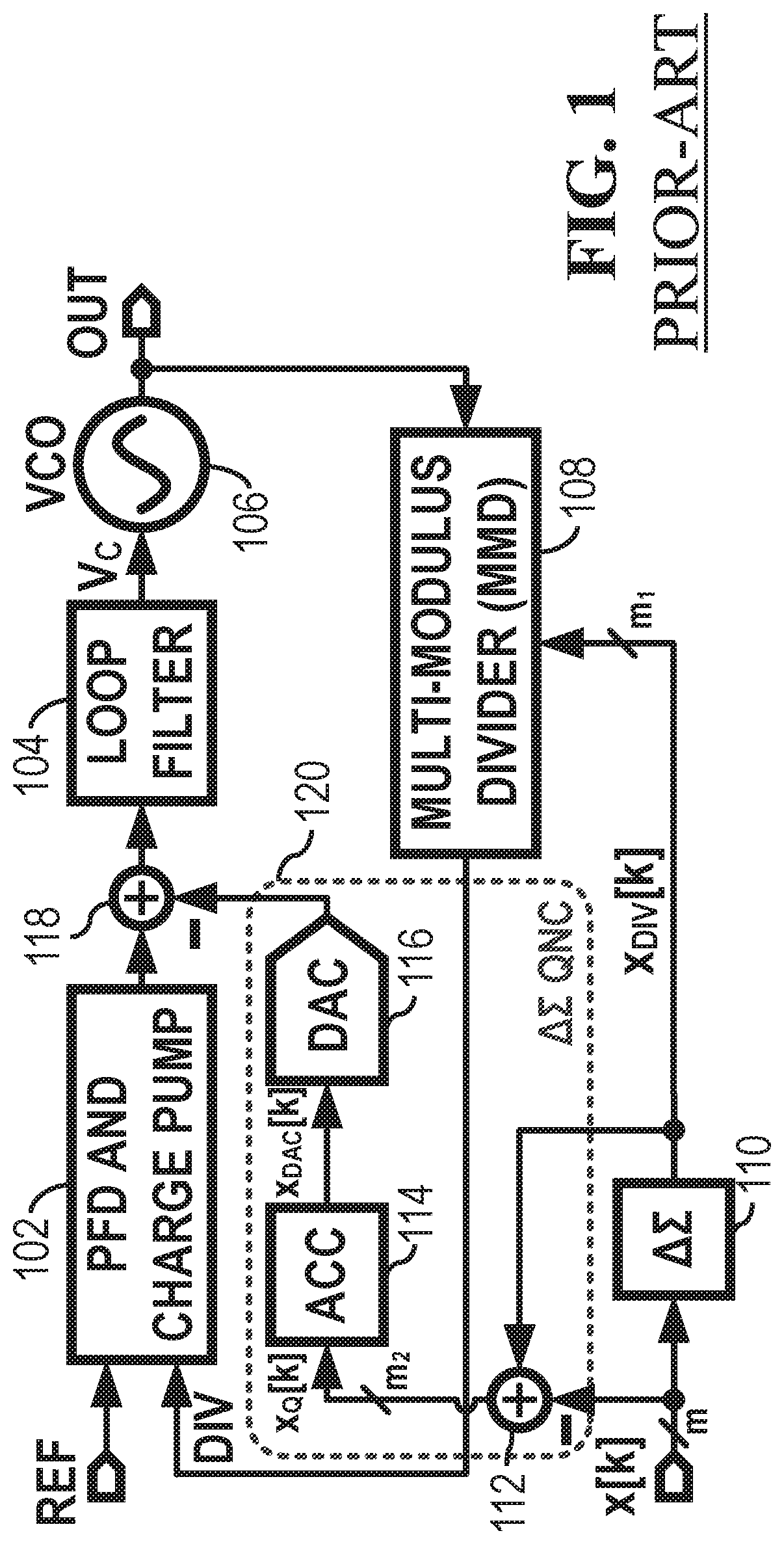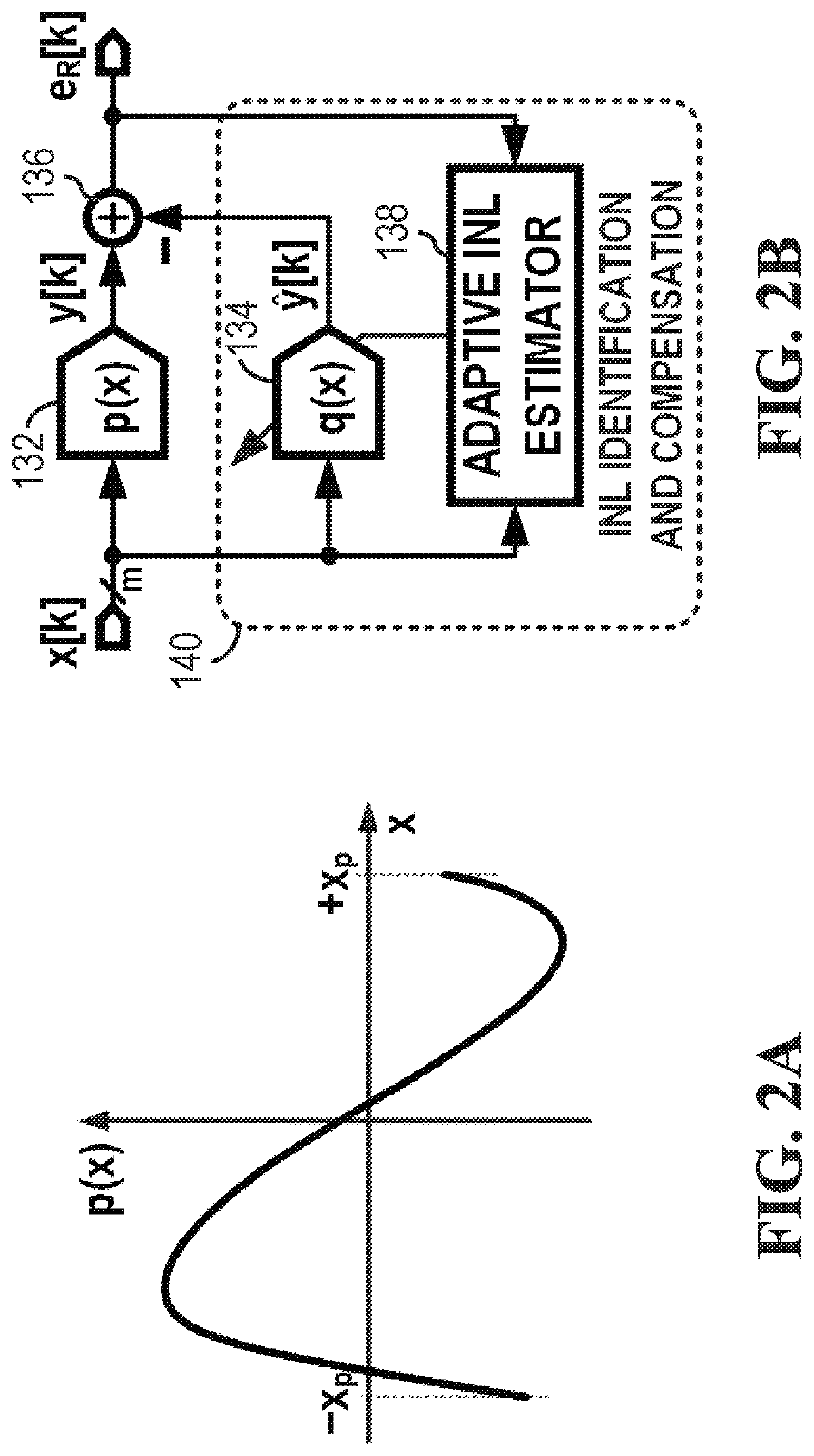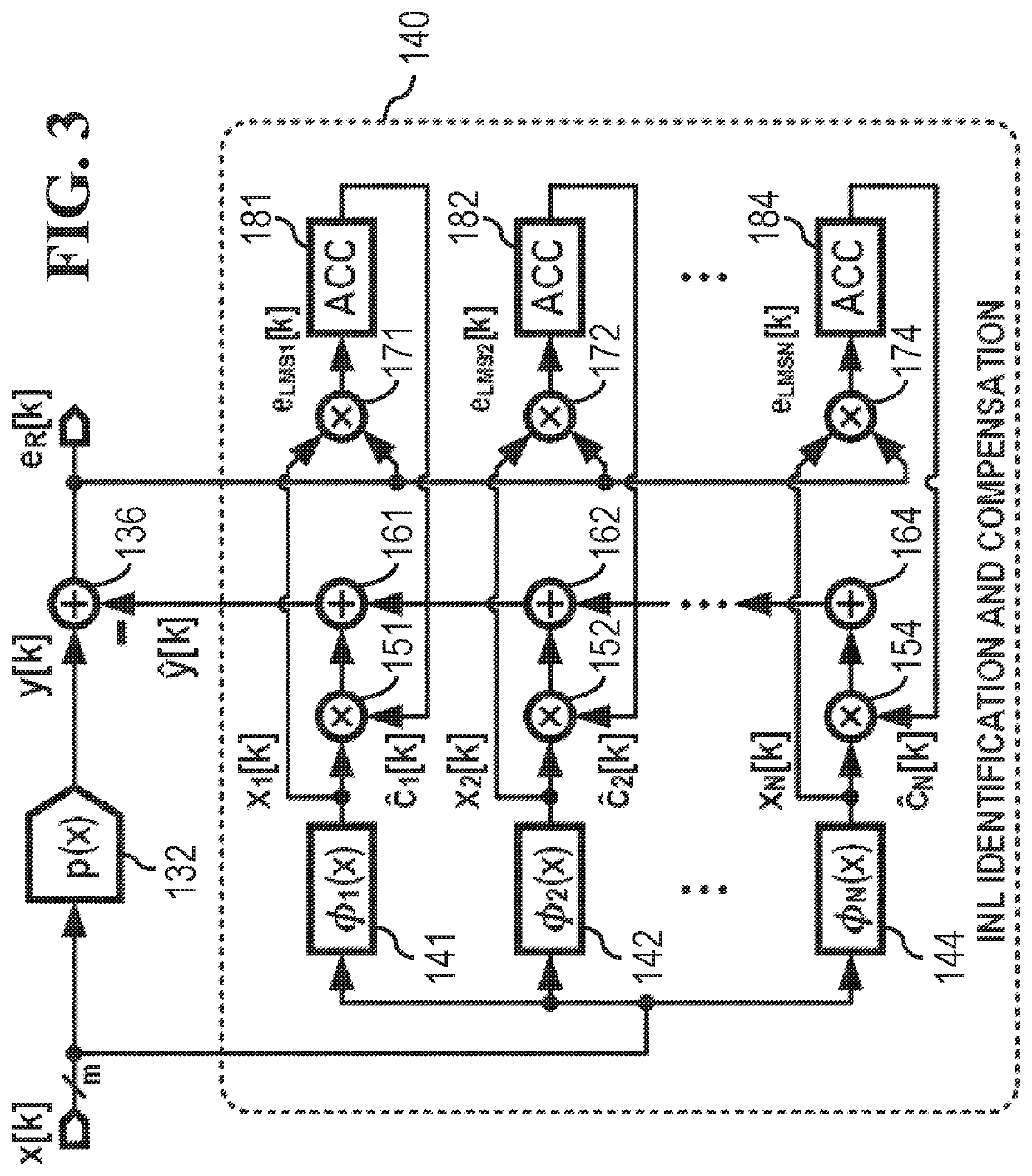Adaptive non-linearity identification and compensation using orthogonal functions in a mixed signal circuit
a non-linearity identification and compensation technology, applied in the field of mixed signal integrated circuits, can solve the problems of non-linearity of circuit building blocks, limiting spurious free dynamic range (sfdr) and signal-to-noise plus distortion ratio (sndr), and high requirements for performance frequency synthesizers with stringent phase-noise and spurious performance requirements
- Summary
- Abstract
- Description
- Claims
- Application Information
AI Technical Summary
Benefits of technology
Problems solved by technology
Method used
Image
Examples
Embodiment Construction
[0032]The present invention relates to an improvement in mixed-signal circuits. The following description is presented to enable one of ordinary skill in the art to make and use the invention as provided in the context of a particular application and its requirements. Various modifications to the preferred embodiment will be apparent to those with skill in the art, and the general principles defined herein may be applied to other embodiments. Therefore, the present invention is not intended to be limited to the particular embodiments shown and described but is to be accorded the widest scope consistent with the principles and novel features herein disclosed.
[0033]The inventor proposes methods and apparatus to identify and compensate the non-linearity of precision analog and mixed-signal building blocks such as ΔΣ DACs and ΔΣ FN-PLLs. In general, any arbitrary memoryless non-linearity of a given circuit block can be described as a function p(x) of its input signal x, where x is defin...
PUM
 Login to View More
Login to View More Abstract
Description
Claims
Application Information
 Login to View More
Login to View More - R&D
- Intellectual Property
- Life Sciences
- Materials
- Tech Scout
- Unparalleled Data Quality
- Higher Quality Content
- 60% Fewer Hallucinations
Browse by: Latest US Patents, China's latest patents, Technical Efficacy Thesaurus, Application Domain, Technology Topic, Popular Technical Reports.
© 2025 PatSnap. All rights reserved.Legal|Privacy policy|Modern Slavery Act Transparency Statement|Sitemap|About US| Contact US: help@patsnap.com



